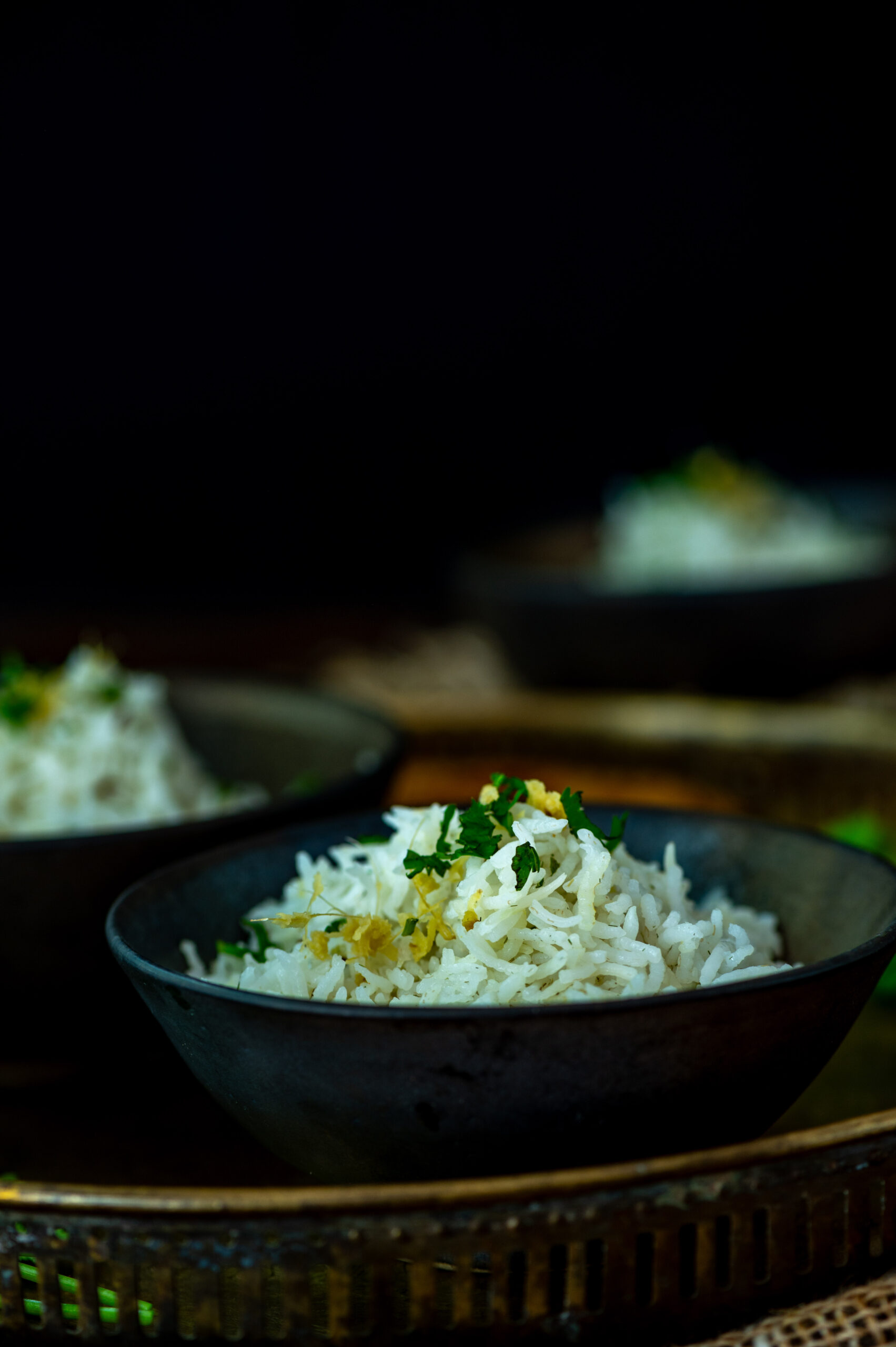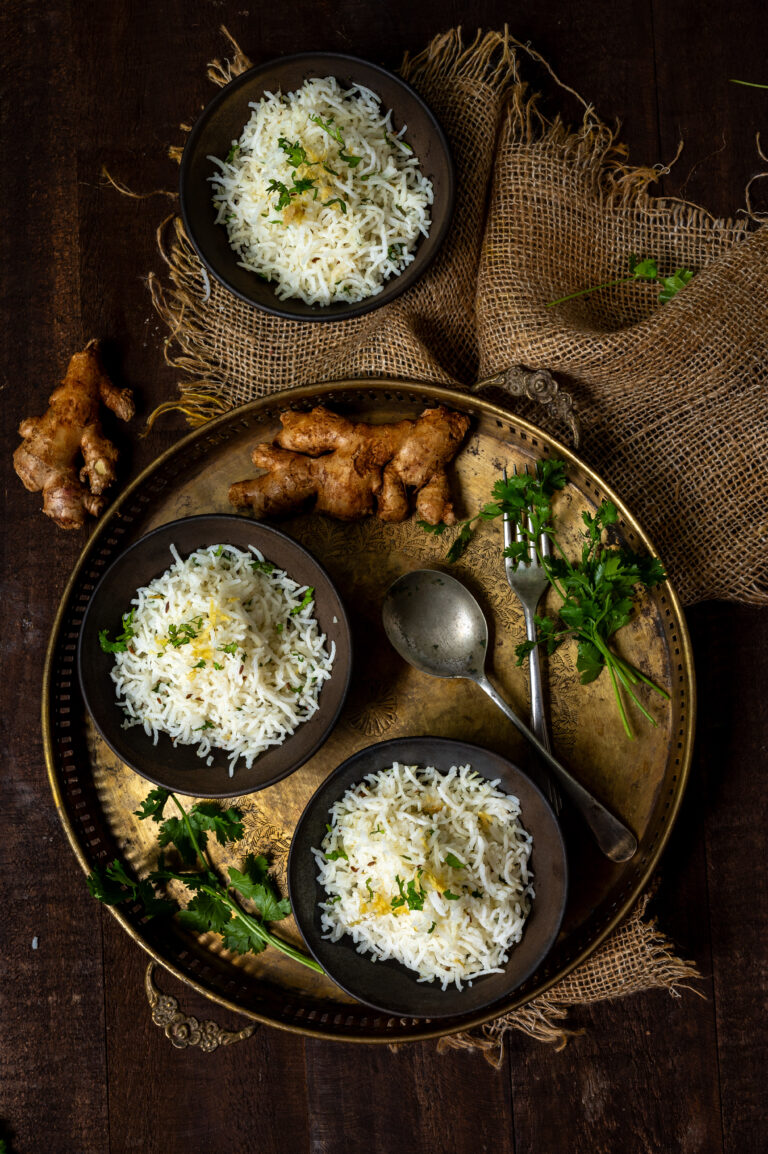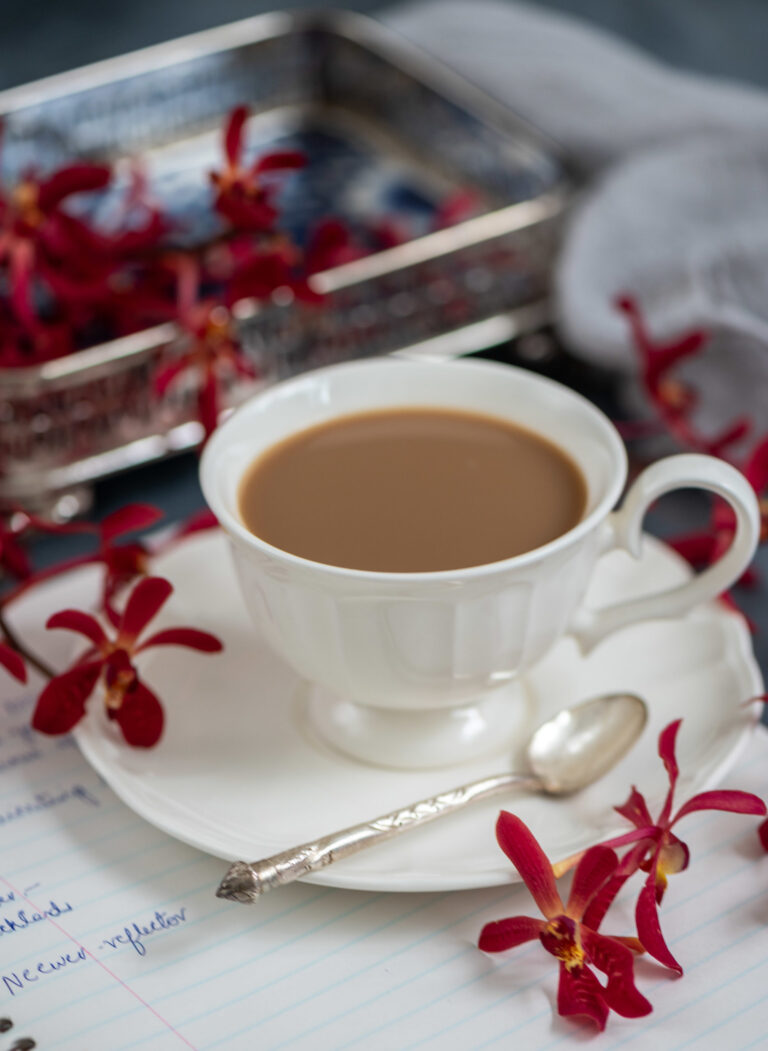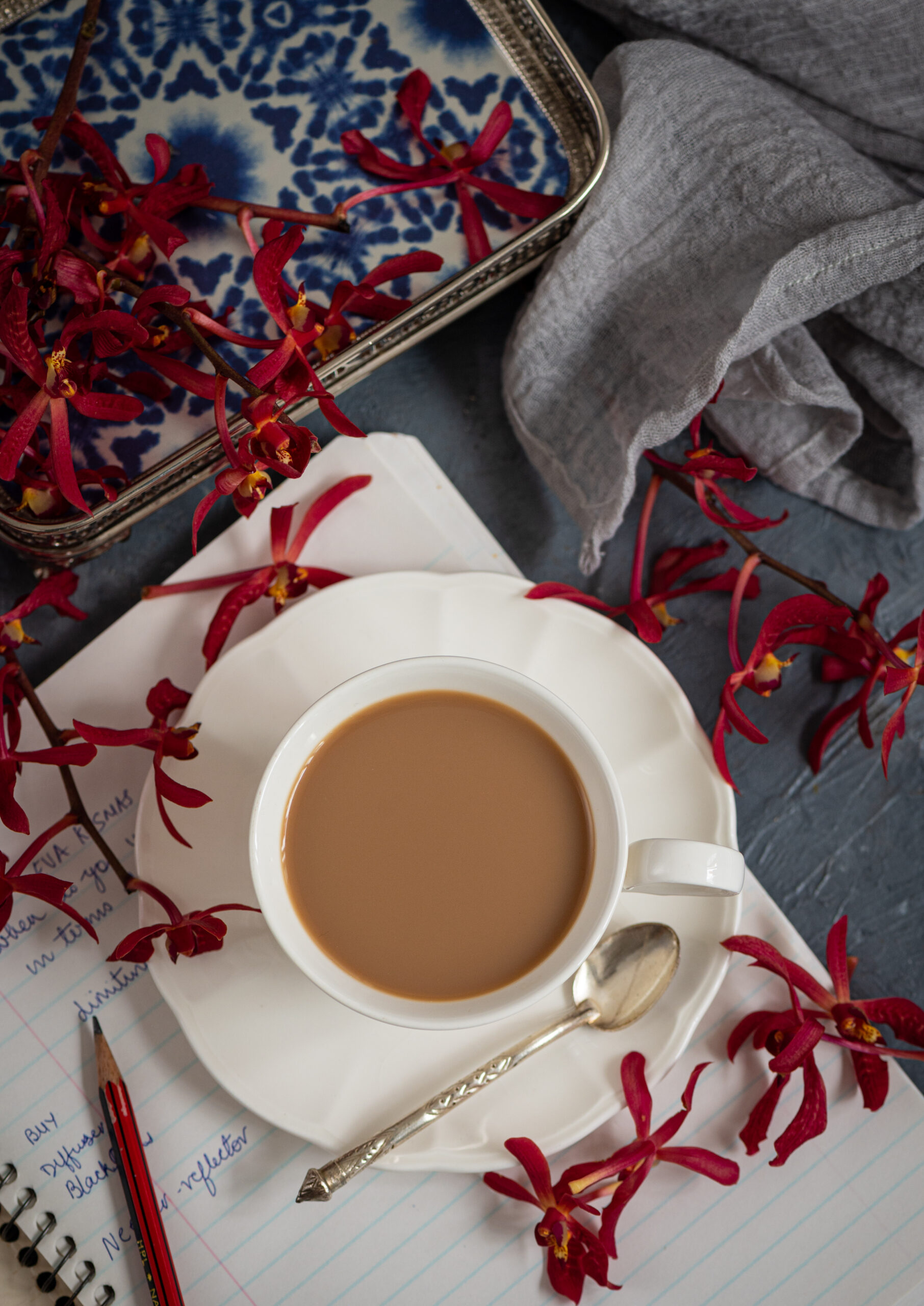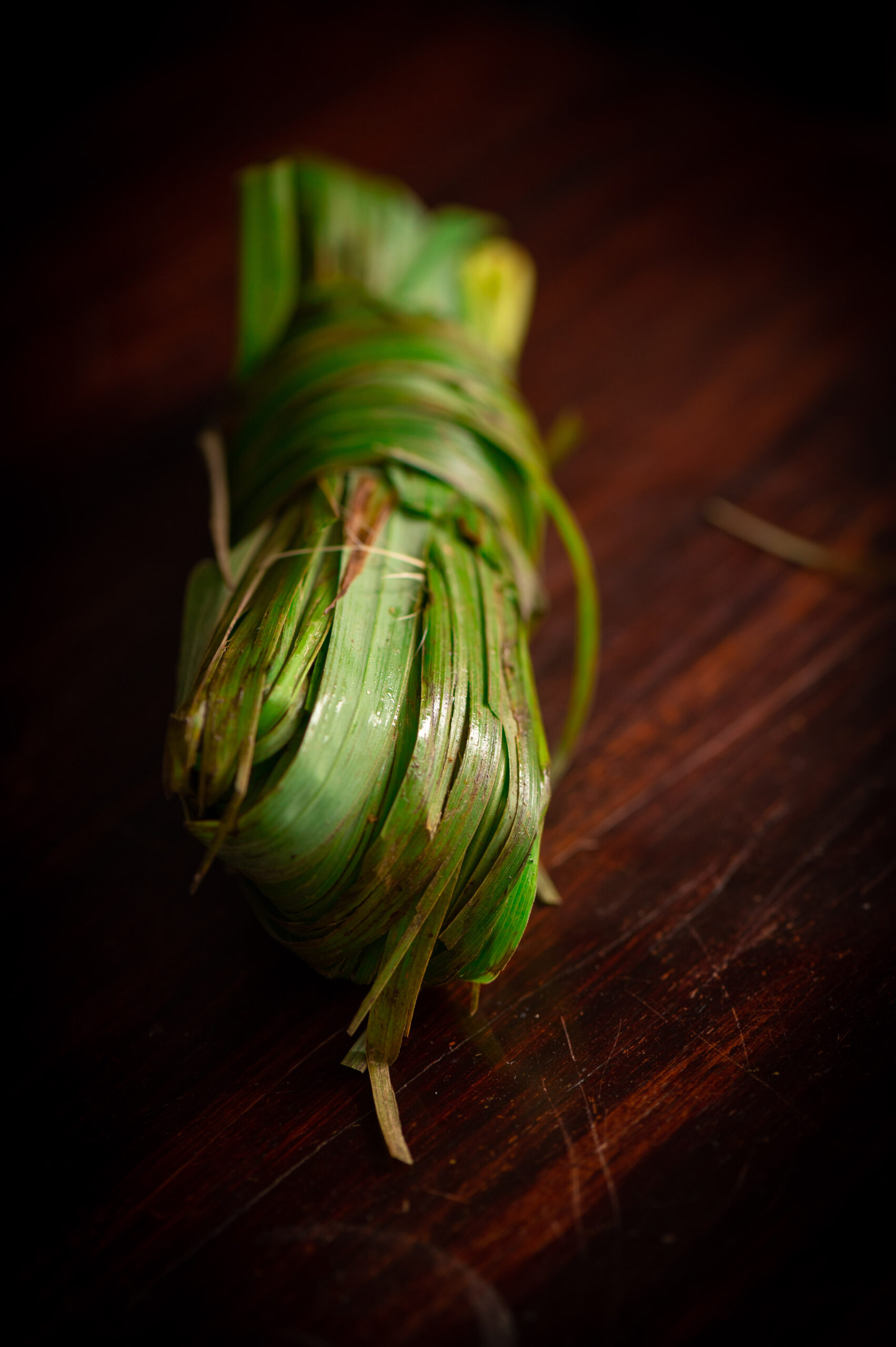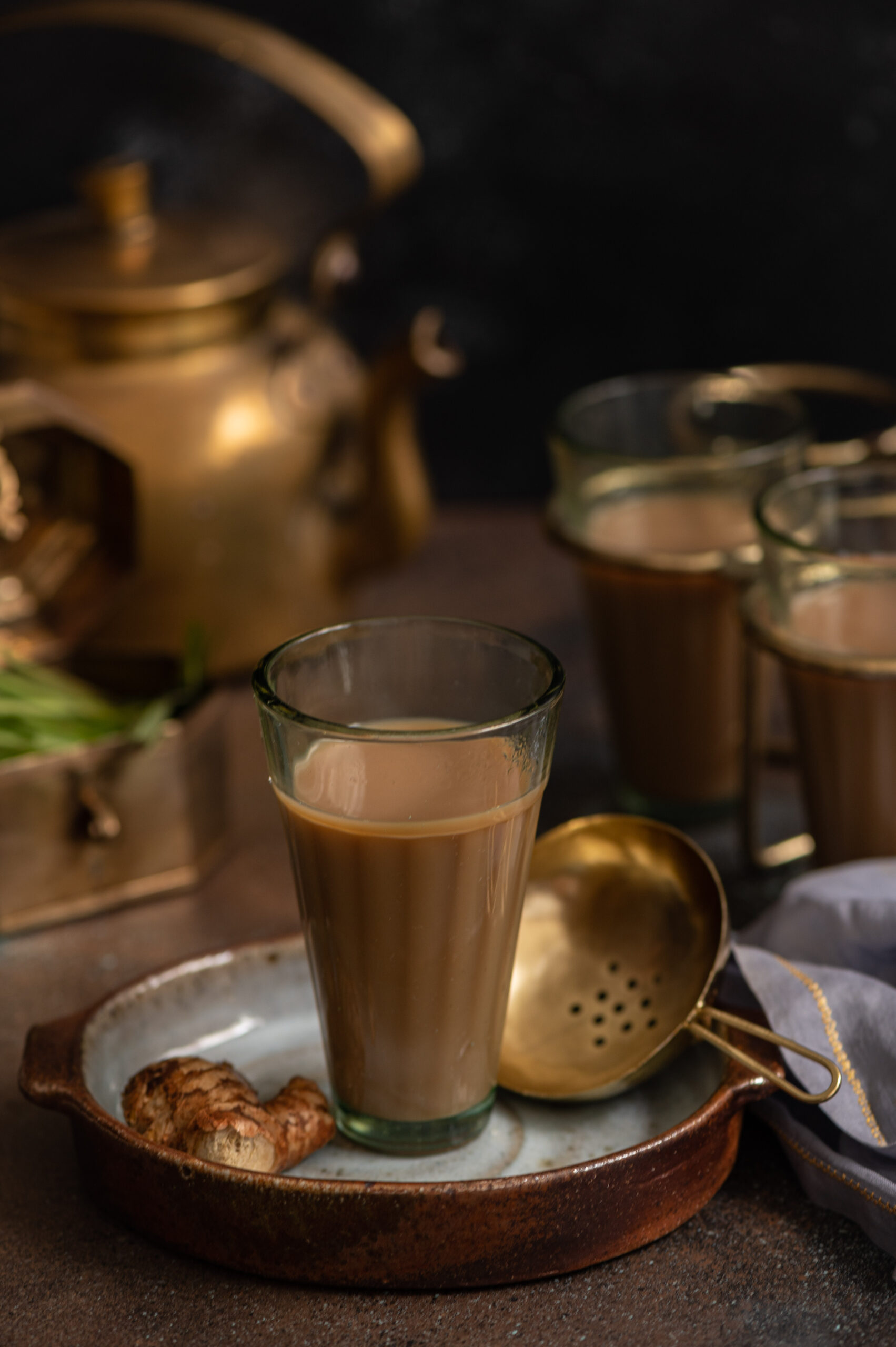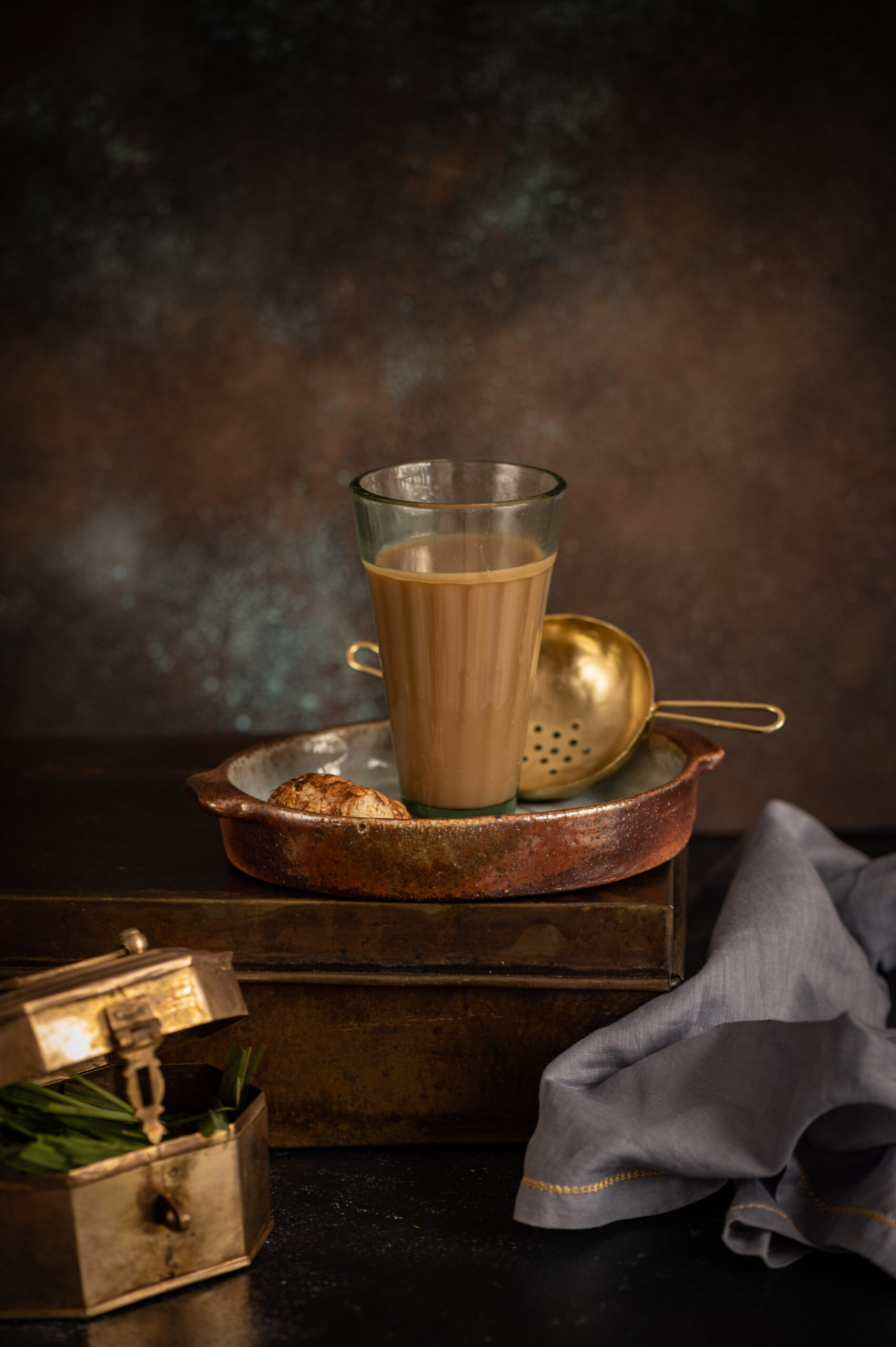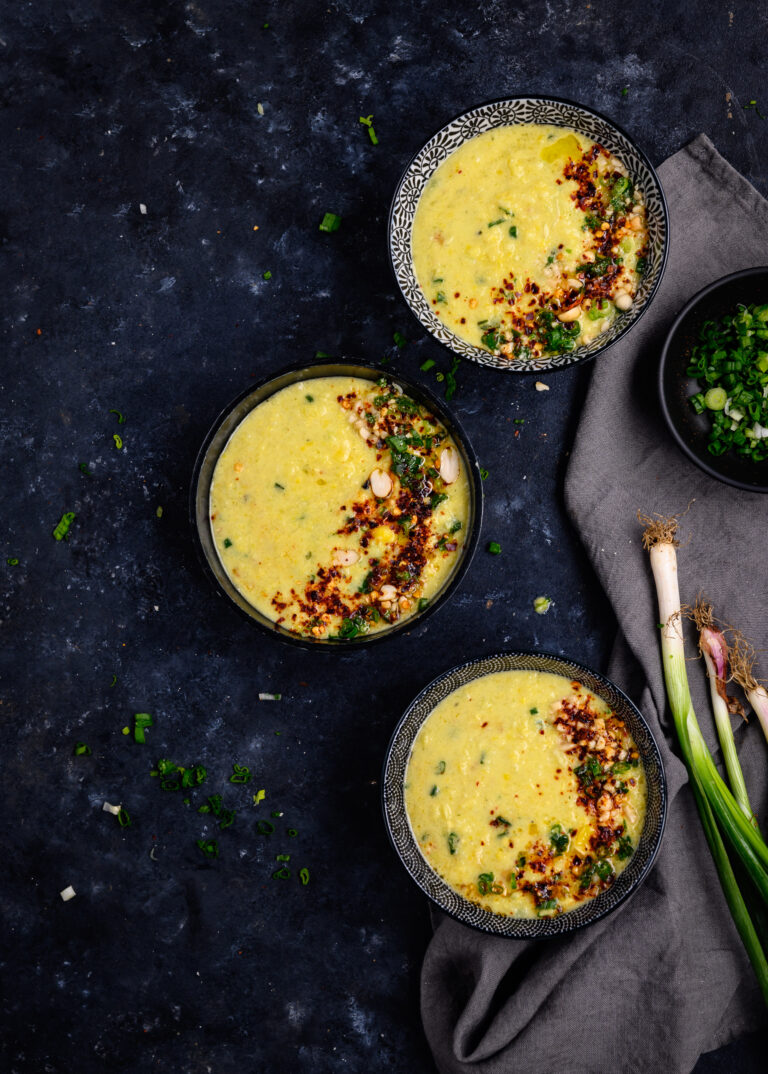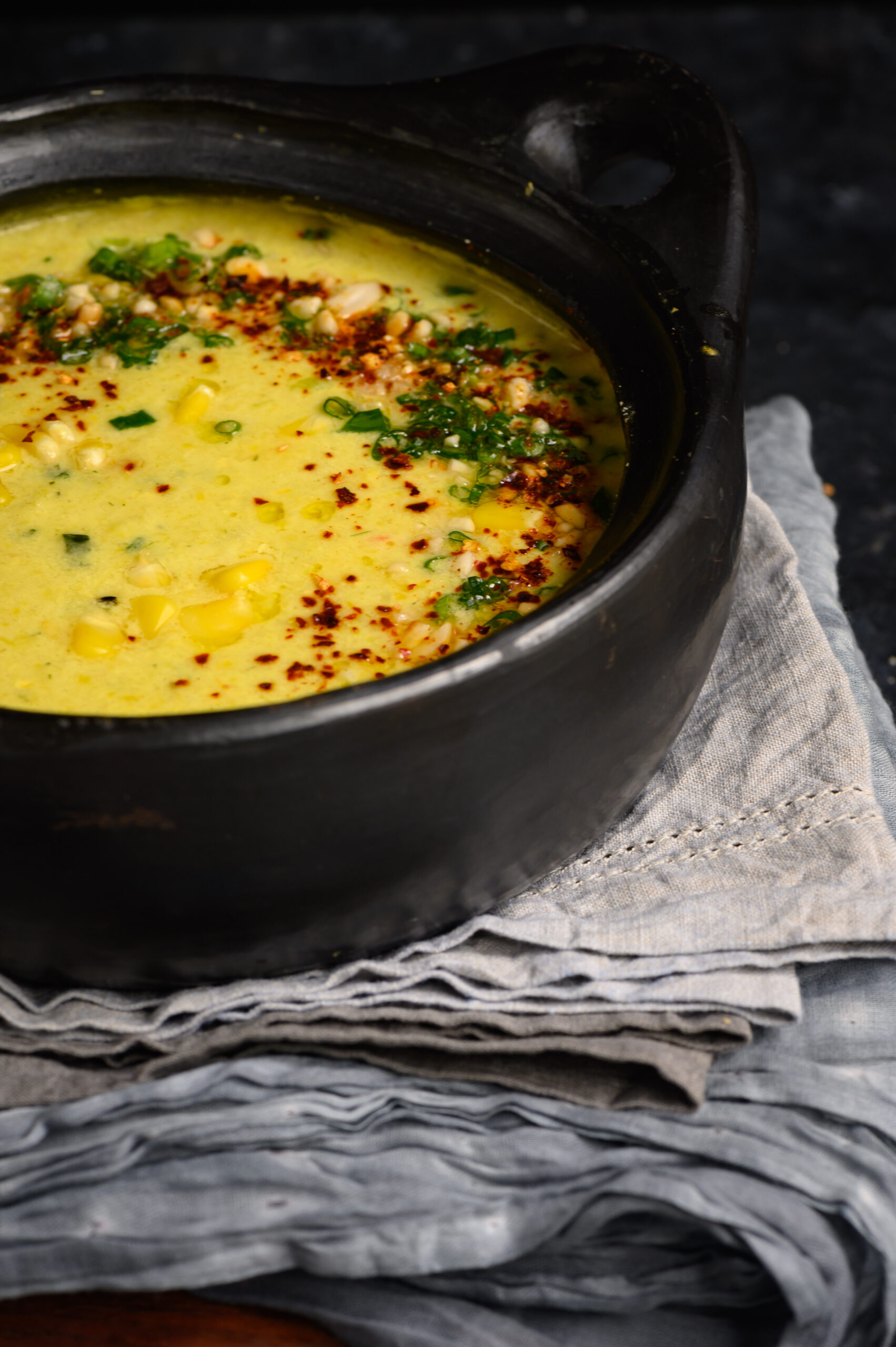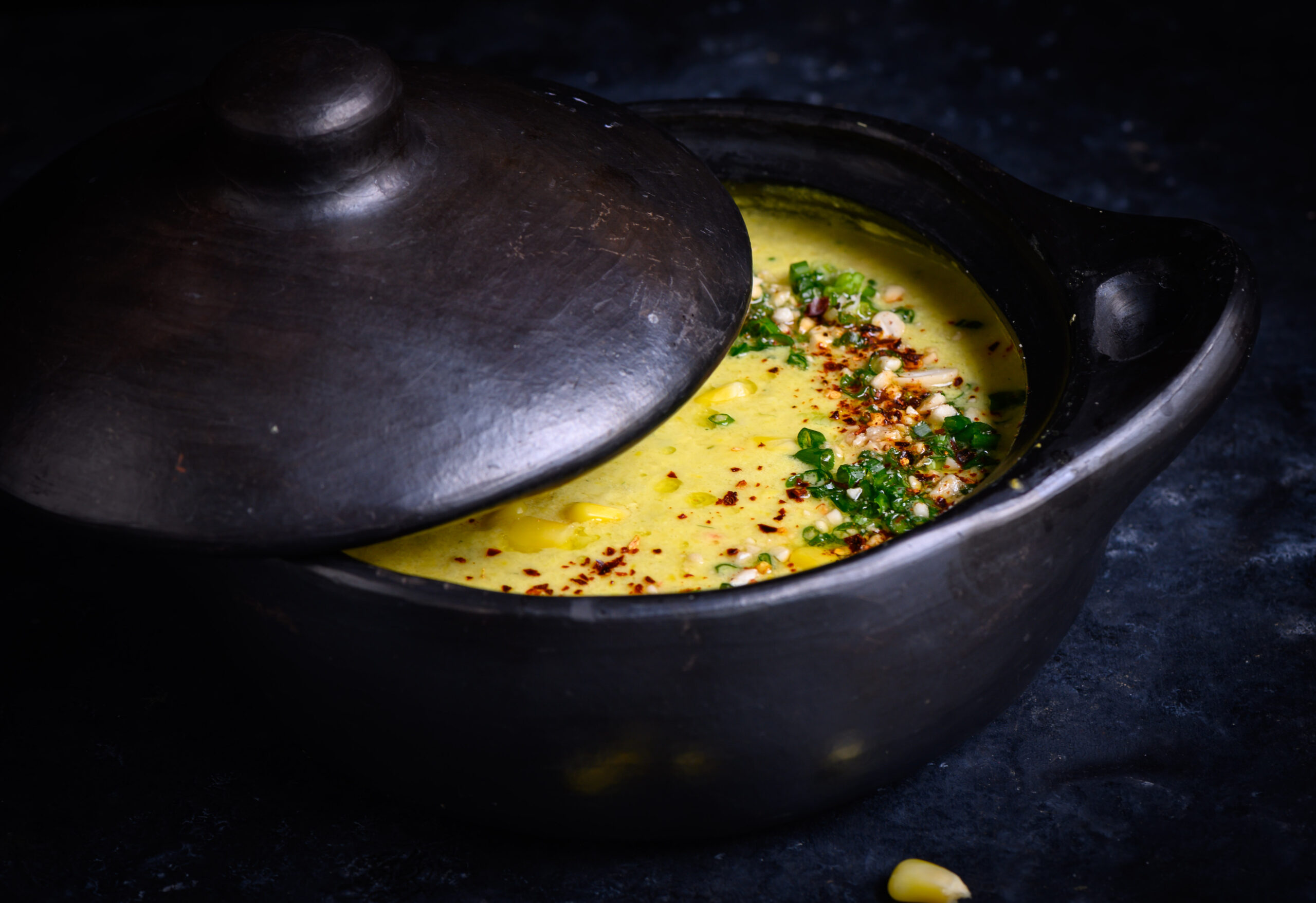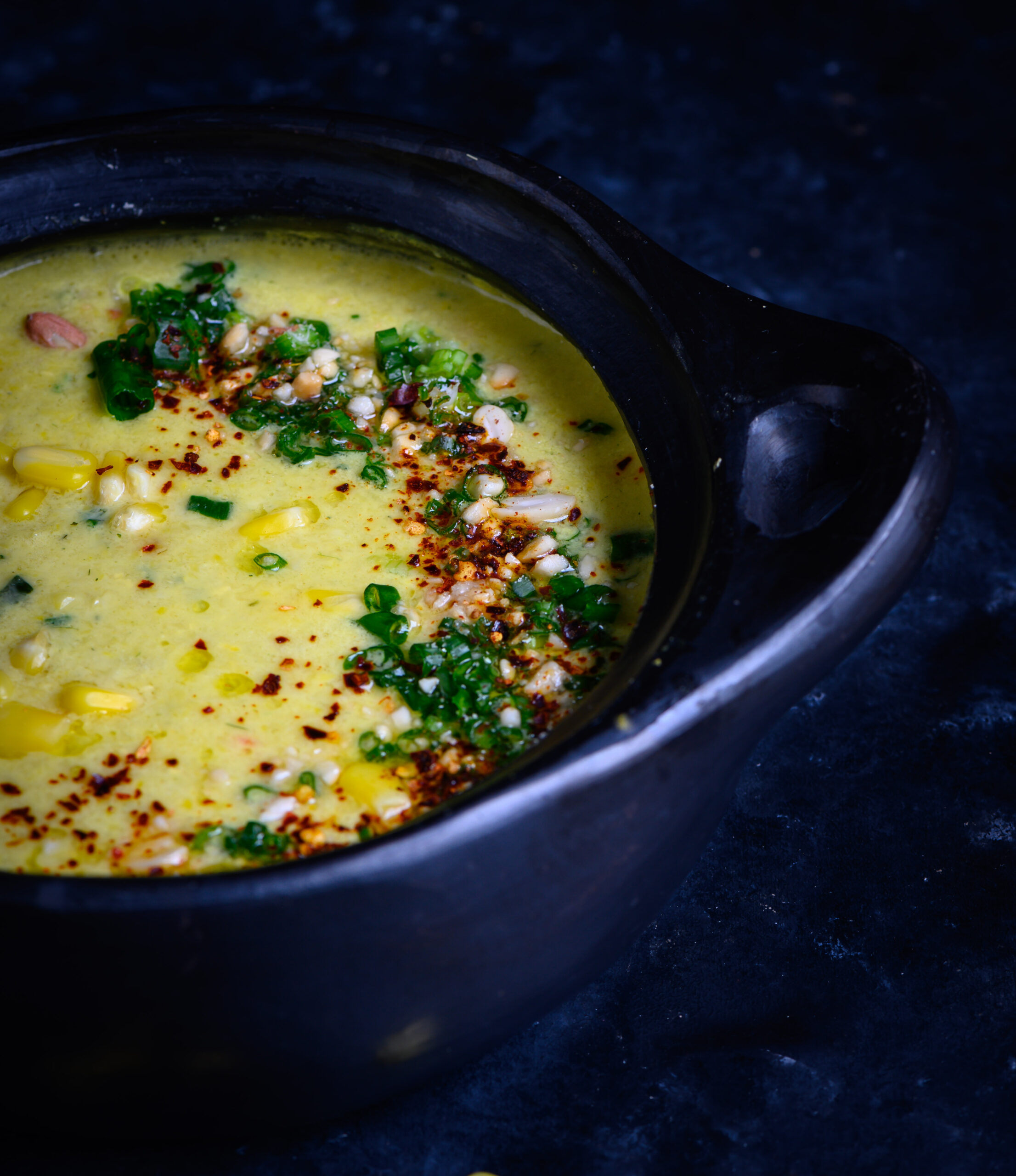I love the flavour of lemongrass. I find it very versatile: it shines in dishes like this vegan whole corn and lemongrass soup, in my early morning tea and even as a semi-decorative element in kachoris. This ginger lemongrass rice is just one of many ways that this wonderfully aromatic herb is used in my home.
Indeed, not only is it used in my home but it is also grown in my home, which means that I have access to fresh green lemongrass leaves whenever I desire them. I currently have this plant on my terrace so that it gets direct sunlight. It sits alongside my jasmines, which I am very proud of. Not only is the visual of them growing together very pleasing, but the natural fragrances that waft there in summer – with the flowers in full bloom giving off a heady scent, alongside the lemongrass – are really so beautiful.
Despite being a long-term fan of lemongrass, this ginger lemongrass rice is a new addition to my repertoire. My daughter is visiting and she loves to cook Thai food, which is what inspired me to bring the ingredient into a lightly stir-fried rice. The method for doing so is a little different, and you can see how to prepare it in the recipe below.
This rice is meant to be accompanied by a side dish, and you can experiment with a variety of cuisines. If I am serving this alongside an Indian dish, fresh coriander or a bit of cumin in the preparation will bring out complementary flavours. If I am pairing it with a Continental dish like a baked spinach (by the way, I will share the recipe for this soon), I may add mint instead. The lemongrass and the ginger remain constants. However you choose to accompany it, the rice itself will be quite flavourful, as well as fragrant.
I have shared quite a few rice recipes here over the years, from biryani to porridge to dessert. In South India, rice grows abundantly, and I’ve also discussed before how the regeneration of native varieties is important. I recently heard the environmental scholar Vandana Shiva speak in Chennai, and I feel moved to share her message. She spoke about how India must maintain our rich agricultural heritage, that farmers should have their own seeds and distribution network and not allow big companies to patent them (this is quite controversial – Monsanto currently has a monopoly on the world’s seeds). She also encouraged farmers to go pesticide-free and focus on seasonal produce, and said that organic food will become more affordable as more farmers choose these methods. It was a very enlightening talk, and these thoughts were on my mind as I prepared this dish. I hope that you too will explore more about these subjects. After all, they relate to our everyday lives and choices.
All said and done, rice is a staple in India, and while it contains sugars and starch, in the right quantities it does more good than harm. I hope we can all come together to be more mindful about our consumption. We can do good, too – even as we indulge.
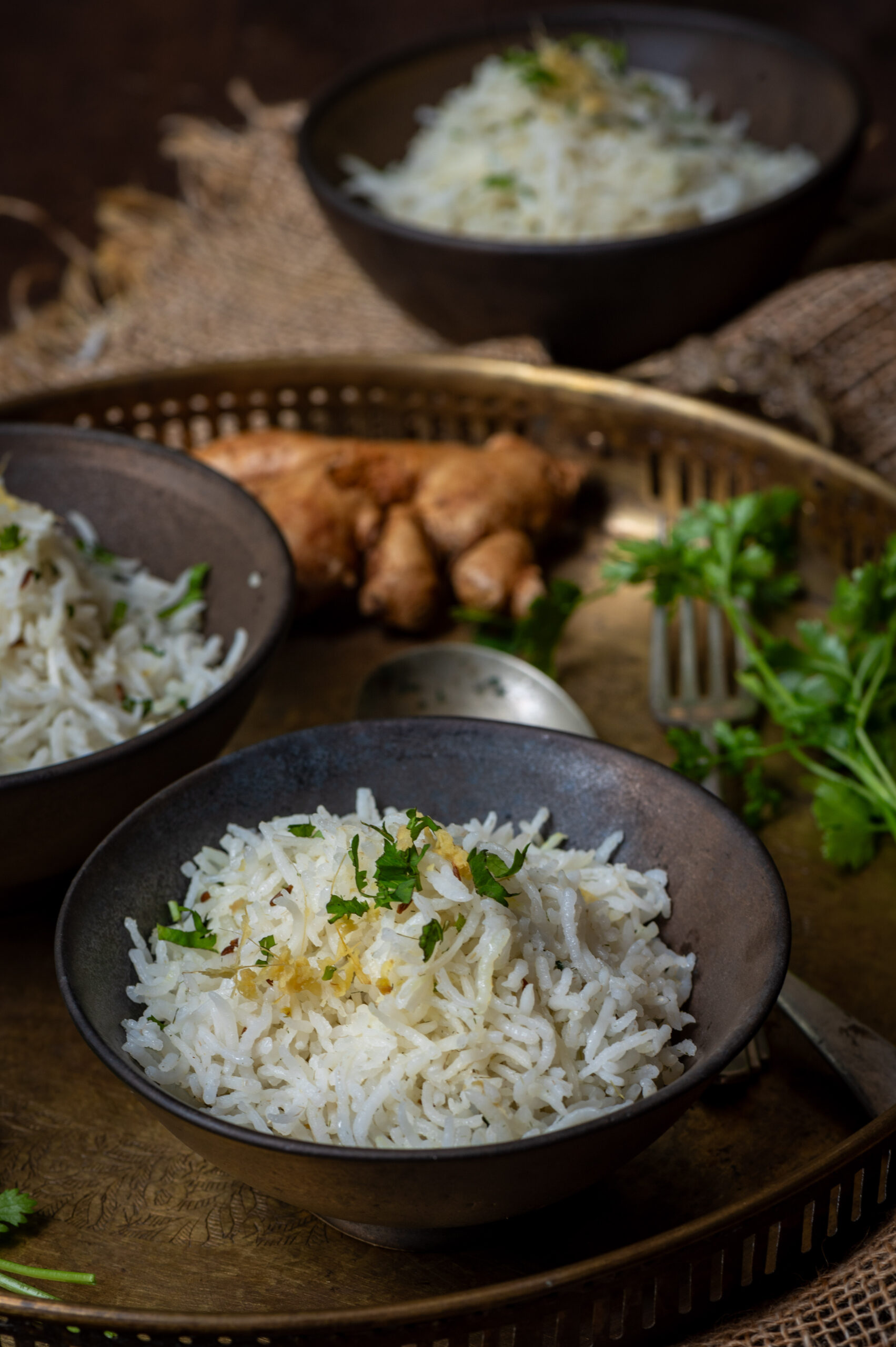
Ginger Lemongrass Rice
(Serves 2)
1 cup rice
5 cups water
2 tablespoons grated ginger
A bunch of fresh lemongrass leaves
Salt to taste
1 tablespoon sesame oil
Finely chopped coriander leaves (for garnishing)
I have used basmati for this dish, but I would recommend using any good South Indian or Asian rice variety. Do keep in mind my prior suggestions for additional ingredients depending on the side dishes you prepare to serve this with.
Rinse and soak the rice in a pot. Add the five cups of water. Add the lemongrass leaves and cook until the rice is tender. Strain and set aside. Remove the lemongrass leaves and discard them.
In a heated pan, add the oil. Now, add the ginger and sauté for a few minutes. Add the cooked, fragrant lemongrass rice along with the salt. Mix gently, allowing the flavours to spread into the rice.
Garnish and serve, along with any other dish. This ginger lemongrass rice will certainly elevate the flavours of its accompaniment, and vice versa. Enjoy!
